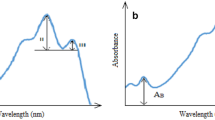Abstract
Halophilic archaea represent a promising natural source of carotenoids. However, little information is available about the biological effects of carotenoids from halophilic archaea. In this study, the carotenoids produced by seven halophilic archaeal strains Halogeometricum rufum, Halogeometricum limi, Haladaptatus litoreus, Haloplanus vescus, Halopelagius inordinatus, Halogranum rubrum, and Haloferax volcanii were identified by ultraviolet/visible spectroscopy, thin-layer chromatography, and high-performance liquid chromatography-tandem mass spectrometry. The C50 carotenoids bacterioruberin and its derivatives monoanhydrobacterioruberin and bisanhydrobacterioruberin were found to be the predominant carotenoids. The antioxidant capacities of the carotenoids from these strains were significantly higher than β-carotene as determined by 1,1-diphenyl-2-picrylhydrazyl radical scavenging assay. The antihemolytic activities of these carotenoid extracts against H2O2-induced hemolysis in mouse erythrocytes were 3.9–6.3 times higher than β-carotene. A dose-dependent in vitro antiproliferative activity against HepG2 cells was observed for the extract from Hgm. limi, while that from Hpn. vescus exhibited a relatively high activity in a dose-independent manner. These results suggested that halophilic archaea could be considered as an alternative source of natural carotenoids with high antioxidant, antihemolytic, and anticancer activity.




Similar content being viewed by others
References
Abbes M, Baati H, Guermazi S, Messina C, Santulli A, Gharsallah N, Ammar E (2013) Biological properties of carotenoids extracted from Halobacterium halobium isolated from a Tunisian solar saltern. BMC Complement Altern Med 13:255–262
Ajila CM, Prasada Rao UJ (2008) Protection against hydrogen peroxide induced oxidative damage in rat erythrocytes by Mangifera indica L. peel extract. Food Chem Toxicol 46:303–309
Albrecht M, Takaichi S, Steiger S, Wang ZY, Sandmann G (2000) Novel hydroxycarotenoids with improved antioxidative properties produced by gene combination in Escherichia coli. Nat Biotechnol 18:843–846
Barua RK, Barua AB (1966) Oxidation of zeaxanthin. Isolation and properties of 3-hydroxyretinene. Biochem J 101:250–255
Britton G (1995) UV/Visible spectroscopy. In: Britton G, Liaaen-Jensen S, Pfander H (eds) Carotenoids: spectroscopy, vol 1B. Birkhäuser Verlag, Basel, pp 13–62
Britton G, Liaaen-Jensen S, Pfander H, Mercadante AZ, Egeland ES (2004) Carotenoids-handbook. Birkhäuser Verlag, Basel
Burgess LC, Rice E, Fischer T, Seekins JR, Burgess TP, Sticka SJ, Klatt K (2008) Lycopene has limited effect on cell proliferation in only two of seven human cell lines (both cancerous and noncancerous) in an in vitro system with doses across the physiological range. Toxicol In Vitro 22:1297–1300
Calegari-Santos R, Diogo RA, Fontana JD, Bonfim TM (2016) Carotenoid production by halophilic archaea under different culture conditions. Curr Microbiol 72:641–651
Chen CW, Hsu SH, Lin MT, Hsu YH (2015) Mass production of C50 carotenoids by Haloferax mediterranei in using extruded rice bran and starch under optimal conductivity of brined medium. Bioprocess Biosyst Eng 38:2361–2367
Cui HL, Gao X, Li XY, Xu XW, Zhou YG, Liu HC, Zhou PJ (2010) Halosarcina limi sp. nov., a halophilic archaeon from a marine solar saltern, and emended description of the genus Halosarcina. Int J Syst Evol Microbiol 60:2462–2466
Cui HL, Li XY, Gao X, Xu XW, Zhou YG, Liu HC, Oren A, Zhou PJ (2010) Halopelagius inordinatus gen. nov., sp. nov., a new member of the family Halobacteriaceae isolated from a marine solar saltern. Int J Syst Evol Microbiol 60:2089–2093
Cui HL, Yang X, Gao X, Xu XW (2011) Halobellus clavatus gen. nov., sp. nov. and Halorientalis regularis gen. nov., sp. nov., two new members of the family Halobacteriaceae. Int J Syst Evol Microbiol 61:2682–2689
Fang CJ, Ku KL, Lee MH, Su NW (2010) Influence of nutritive factors on C50 carotenoids production by Haloferax mediterranei ATCC 33500 with two-stage cultivation. Bioresour Technol 101:6487–6493
Huang D, Ou B, Prior RL (2005) The chemistry behind antioxidant capacity assays. J Agric Food Chem 53:1841–1856
Kelly M, Jensen SL (1967) Bacterial carotenoids. XXVI. C50-carotenoids. 2. Bacterioruberin. Acta Chem Scand 21:2578–2580
Kotake-Nara E, Kushiro M, Zhang H, Sugawara T, Miyashita K, Nagao A (2001) Carotenoids affect proliferation of human prostate cancer cells. J Nutr 131:3303–3306
Leone A, Zefferino R, Longo C, Leo L, Zacheo G (2010) Supercritical CO2-extracted tomato oleoresins enhance gap junction intercellular communications and recover from mercury chloride inhibition in keratinocytes. J Agric Food Chem 58:4769–4778
Mandelli F, Miranda VS, Rodrigues E, Mercadante AZ (2012) Identification of carotenoids with high antioxidant capacity produced by extremophile microorganisms. World J Microbiol Biotechnol 28:1781–1790
Margesin R, Schinner F (2001) Potential of halotolerant and halophilic microorganisms for biotechnology. Extremophiles 5:73–83
Rodrigo-Baños M, Garbayo I, Vílchez C, Bonete MJ, Martínez-Espinosa RM (2015) Carotenoids from haloarchaea and their potential in biotechnology. Mar Drugs 13:5508–5532
Ronnekleiv M (1995) Bacterial carotenoids 53* C50-carotenoids 23; carotenoids of Haloferax volcanii versus other halophilic bacteria. Biochem Syst Ecol 23:627–634
Sachindra NM, Sato E, Maeda H, Hosokawa M, Niwano Y, Kohno M, Miyashita K (2007) Radical scavenging and singlet oxygen quenching activity of marine carotenoid fucoxanthin and its metabolites. J Agric Food Chem 55:8516–8522
Vílchez C, Forján E, Cuaresma M, Bédmar F, Garbayo I, Vega JM (2011) Marine carotenoids: biological functions and commercial applications. Mar Drugs 9:319–333
Acknowledgements
This work was financially supported by grants from National Natural Science Foundation of China (Nos. 31600002 and 31370054), China Postdoctoral Science Foundation funded project (No. 2015M581728), Jiangsu Planned Projects for Postdoctoral Research Funds (No. 1501069C), and the Advanced Talent Foundation of Jiangsu University (No. 15JDG062). The authors thank Prof. Aharon Oren (The Hebrew University of Jerusalem) for many helpful suggestions.
Author information
Authors and Affiliations
Corresponding author
Ethics declarations
Conflict of interest
The authors declare that there is no conflict of interest.
Ethical Approval
All applicable international, national, and/or institutional guidelines for the care and use of animals were followed.
Electronic supplementary material
Below is the link to the electronic supplementary material.
Rights and permissions
About this article
Cite this article
Hou, J., Cui, HL. In Vitro Antioxidant, Antihemolytic, and Anticancer Activity of the Carotenoids from Halophilic Archaea. Curr Microbiol 75, 266–271 (2018). https://doi.org/10.1007/s00284-017-1374-z
Received:
Accepted:
Published:
Issue Date:
DOI: https://doi.org/10.1007/s00284-017-1374-z




